I have been a bit quiet. I shall often be - which is one reason why you don’t need to pay a single sou to get everything on this ‘substack’. On this occasion, I was away at my alma mater, Oxford, for the Literary Festival there. I had the pleasure of interviewing the American journalist Rod Dreher on his excellent new book, Living in Wonder, and the Catalan philosopher Jordi Pigem on his fascinating work, all of it hitherto in Catalan or Spanish, which has so many points of contact with my own. I also had the honour of being interviewed by Charles Foster, whom I greatly admire, about TMWT.
I want to share with you a chapter from TMWT, one on the science of life. I don’t propose to share any other chapters. I posted an exchange between myself and Michael Levin a short while ago which touched on some of the same issues. I felt that some background to my thoughts about how science can best help us understand - or indeed misunderstand - life itself needed to be shared with you. I took a while writing it, and it says much of what I feel needs to be said better than I could rehash it, even if I had the time, which sadly I don’t. So here goes.
I thought it might help if I began by orientating you to where this particular chapter fits into the book overall. Below is the title page to Volume I:
And here are the contents. We will be looking at Chapter 12, which is in Volume I, Part II.
The Introduction and the first nine Chapters concern what I call ‘the means to truth’, in other words the faculties we have whereby we could get to know anything about the world at all. I take these to be: attention, perception, judgment, apprehension, emotional and social intelligence, cognitive intelligence, and creativity. With one major exception, that of grasping and using the world (what I call ‘apprehension’, as distinct from ‘comprehension’) the right hemisphere is so superior to the left that the left can be regarded as frankly deluded, unless under the superintendence of the right hemisphere. This would be of no consequence if we could not differentiate the signs, the hallmark, the imprint, of either hemisphere on the sort of picture of the world it generates. But we can. The consequence is, I believe, of fundamental importance to philosophy. Till now we have had to say ‘some philosophers have thought like this, but others have thought like that: take your pick.’ Now we can make a reasonably good choice, seeing which the more attentive, perceptive, insightful, intelligent and creative (right) hemisphere favours. That is Part I: neuropsychology and neuropsychiatry.
The next ten Chapters concern the main paths we may follow in any journey towards truth, along with their particular strengths and weaknesses. I take them to be: science, reason, intuition and imagination. I conclude that each of these has its particular strengths and weaknesses, but that we vitally need all four. This is Part II: epistemology.
The final ten Chapters concern what we can say about the nature of the cosmos, now that we have some idea of what will be most likely to lead us towards the truth - at least, since the word ‘truth’ may sound final, if not grandiose, towards what we may take as truer. I consider: the coincidence of opposites, the One and the Many, the nature of time, flow and movement, space, matter, consciousness, value, purpose, and the sense of the sacred. That is Part III: ontology or metaphysics. The book ends wth an Epilogue on where we are now.
So now we can turn to Chapter 12, which comes after a chapter boldly entitled ‘What is truth?’ (Chapter 10), and a further chapter entitled ‘Science’s claims on truth’ (Chapter 11). The next chapter is the one I wish to share. It is on the nature of biology, and is entitled ‘The science of life: a study in left hemisphere capture’. I share the pdf of the first page to give some idea of how the text and notes are aligned with one another in the printed volumes, but I will have to continue after that with ordinary typed text, less appealing as it may be.
Chapter 12: The science of life: a study in left hemisphere capture
Movement is the cause of all life.
—Leonardo da Vinci[1]
It is nonsense to conceive of nature as a static fact, even for an instant devoid of duration. There is no nature apart from transition, and there is no transition apart from temporal duration.
—Alfred North Whitehead[2]
For all bodies are in perpetual flux, like rivers, and parts are
constantly entering into and leaving them.—Gottfried Wilhelm Leibniz[3]
By changing, it remains the same.
—Heraclitus[4]
‘In the living world, at least,’ writes philosopher of science John Dupré, ‘a metaphysics of “things” is hard to sustain.’[5] Nonetheless it would appear to be the only realm of science in which it still holds sway. While the thinking of physicists has been obliged to jettison many of its old assumptions, the thinking of most biological scientists does not seem to have kept pace – which is odd, if only because most contemporary biologists seem to believe that biology should be reducible to physics. (I’d say that, while it could never be reduced to physics, it should certainly be compatible with physics.) It has, at least until very recently, been stuck in a mid-Victorian mechanistic vision that physics abandoned over a hundred years ago. Cognitive scientist Donald Hoffman considers this a problem (as do I):
Not only are they ignoring the progress in fundamental physics, they are often explicit about it. They’ll say openly that quantum physics is not relevant to the aspects of brain function that are causally involved in consciousness … They don’t avail themselves of the incredible insights and breakthroughs that physics has made. Those insights are out there for us to use, and yet my field says, ‘We’ll stick with Newton, thank you. We’ll stay 300 years behind in our physics.’[6]
The problem is not just that biology has not availed itself of the insights of quantum physics. It’s that its dogged adherence to the Newtonian mechanistic model persists in the teeth of the evidence of its incompatibility with the phenomena it is trying to explain. It is an egregious instance, I would suggest, of the sort of thing we have seen before when the left hemisphere insists that its re-presentations provide an adequate and complete account of reality – that a porcupine is a monkey because that’s what the theory tells us. And it alerts us to the need to handle science’s claims to truth with care.
Please don’t get me wrong. I have nothing but respect and admiration for the ingenuity and hard work of my colleagues in the life sciences, and am exhilarated by the ever-growing body of knowledge about the natural world. It manifestly proves itself to be useful in myriad ways and, fairly obviously, my thinking too depends heavily on the broad reliability of recent scientific evidence about the brain and mind. Nonetheless, there is a problem.
Science’s view of the world is always shaped by the philosophy it happens to adopt, whether consciously or (more usually) unconsciously. For physicists, as we have seen, it is more or less impossible to avoid confronting philosophical issues head on. For biologists, however, confrontation with reality is tempered by the nature of their subject matter, which is more forgiving of a fudge. The evolutionary biologist and palaeontologist George Gaylord Simpson remarked that ‘not many biologists are given to exploring the philosophical implications of their science.’[7] More trenchantly, the theoretical biologist and philosopher Joseph Henry Woodger wrote in 1929 that
physiologists in general never trouble themselves about such things because they suppose themselves to be above ‘metaphysics’ when in fact they are only a very little above it – being up to the neck in it.[8]
As David Bohm commented in the 1960s, it is an odd fact that, just when physics was moving away from mechanism, biology and psychology were moving closer to it. ‘If the trend continues’, he wrote, ‘scientists will be regarding living and intelligent beings as mechanical, while they suppose that inanimate matter is too complex and subtle to fit into the limited categories of mechanism.’[9] He was not mistaken.
Nonetheless, in the first half of the twentieth century, many philosophically minded biologists, including such eminent British figures as John Scott Haldane and his better-known son, J.B.S. Haldane, as well as Conrad Hal Waddington, moved decisively, like the physicists, away from the machine model. Less renowned, largely by his own choice, but no less distinguished, was Ludwig von Bertalanffy, the great Austrian biologist and polymath who originated general system theory. In 1933 he wrote: ‘we cannot speak of a machine “theory” of the organism, but at most of a machine fiction’.[10]
Despite this encouraging development, a more or less abrupt reversion to the seventeenth-century Cartesian model came over the life sciences with the rise of molecular biology, and its language of ‘programmes’, ‘codes’, and so forth, in the twentieth century’s second half. According to Carl Woese, writing in 2004, ‘biology today is little more than an engineering discipline’.[11] And Woese was no embittered outsider. His pioneering work revolutionised mainstream biology; he was one of the most influential and widely honoured microbiologists of all time, described by a colleague as having ‘done more for biology writ large than any biologist in history, including Darwin’.[12] But he was disturbed by what he saw.
Biology and machines: a mismatch of language
We now live in a world in which everything, including the human brain, is considered to be understandable in the same way – at a hugely different level of complexity, of course, but still in the same way – that we understand a pop-up toaster. ‘Before we can fully understand how our brains work, we need to understand how the parts work’, says Francis Collins, the director of the US National Institutes of Health.[13] Reasonable enough, you may say – if you assume that ‘fully understanding how our brains work’ is something any scientist should even be talking about. But enquiring after how the ‘parts work’, already imports a host of assumptions, as we have seen. The answers one gets from Nature depend on how one frames the question.
‘There is little doubt about the biologist’s declared obsession with mechanisms of every sort’, writes Stephen Talbott, a philosopher of biology; these include widespread references to
‘genetic mechanisms’, ‘epigenetic mechanisms’, ‘regulatory mechanisms’, ‘signalling mechanisms’, ‘oncogenic mechanisms’, ‘immune mechanisms’, ‘circadian clock mechanisms’, ‘DNA repair mechanisms’, ‘RNA splicing mechanisms’, and even ‘molecular mechanisms of plasticity’ … no cellular entity or process is exempt; everything has been or will be baptised a ‘mechanism’ … The odd thing is that I have yet to find a single technical paper in molecular biology whose author thought it necessary to define mechanism or any of the related terms.[14]
Yet what is even odder is that, having made this ritual obeisance to the machine, biologists carry on to describe the organism in language wholly incompatible with mechanism, a language that would be neither required, nor permitted, in chemistry or physics.
It will no doubt be said by some that such language is just a façon de parler, such as when I say that my car engine ‘labours’, or ‘struggles’ to get up the hill in third gear. But that is not an adequate response to the sheer ubiquity, scope and inescapability of such language – or, more significantly, the nature of the phenomena it is called on to describe. As Whitehead pointed out, ‘it is notable that no biological science has been able to express itself apart from phraseology which is meaningless unless it refers to ideals proper to the organism in question.’[15]
I would suggest that there are broadly six features that stand out in the language inevitably used by biologists, rather than by physicists or chemists, time and time again, year after year, decade after decade, century after century, Darwin and Dawkins included – language used to describe what they actually see, but which stands in blatant contradiction to the metaphor of the machine. What are they? References to (1) actively co-ordinated processes, expressing a sense of (2) wholeness, inextricably linked with (3) values, (4) meaning and (5) purpose – each leading separately and together, to the phenomenon of (6) self-realisation. None of these get to be applied to my car.
Let me give some examples. First, ‘actively co-ordinated processes’. Apart from, directly, ‘co-ordinating’ functions, processes, developments, and so on, elements of the organism are said to ‘regulate’, ‘control’, ‘guide’, ‘induce’, ‘impose’ order on, and at times ‘disorder’, ‘arrange’, ‘restructure themselves’, ‘develop’, ‘adapt’, ‘respond’, ‘attempt’, ‘instigate’, ‘stimulate’, ‘inhibit’, ‘suppress’, ‘transmit’, and ‘receive’ or ‘extract’ information from other elements of the whole.
Then ‘wholeness’. References to ‘rhythm’ and ‘harmony’ aside, elements of the organism are said to ‘inherit’ information, modes of action or modes of expression, from other organisms from which they are neither structurally nor functionally wholly distinct; they are said to ‘exhibit plasticity’, involving transformation not of a part or parts, but of the whole; they ‘modify themselves’, ‘integrate’, ‘unify’, ‘co-ordinate’, ‘organise’, and ‘interpret’ contextually, that is to say, with regard to the whole organism, not just a part.
Or ‘values’. Organisms are normative. They exhibit what is termed ‘normal’, or ‘proper’, development; they may exhibit ‘errors’ or ‘mishaps’; ‘suffer injury’; engage in ‘healing’; attempt ‘correction’, or instigate ‘repair’; perform actions in a ‘timely’ fashion (or not); exhibit ‘aberrant’ or ‘corrective’ reactions; promote ‘health’, suffer ‘disease’ and eventually die.
What about ‘meaning’? How else to understand the talk of ‘giving and receiving information’, the ‘recognising’ and ‘interpreting’ of signals, the ‘distinguishing’ of ‘relevant’ from ‘irrelevant’ information, the ‘adoption’, ‘erasing’ or ‘extraction’ of a code, the ability to ‘communicate’, ‘respond’, exhibit ‘intention’, or ‘directed activity’, and the ability to – in some way we do not understand – ‘sense’ that something, some disturbance, say, is present. For example, an influential paper refers, not inappropriately, to ‘decision-making’ by single cell bacteria.[16] I will come onto such decision-making by single cells in due course.
And ‘purpose’? However you may toss her out with a pitchfork, as Horace said, nature hurries back in by the door;[17]and it is impossible to describe the living world at any level without references to aims, purposes or drives. Biological molecular interactions have ‘targets’, ‘recruit’ other molecules for an end, ‘assist’ in processes, ‘aim’ at certain outcomes, have ‘goals’ and ‘achieve tasks’: they act ‘in order to’ secure certain ends by certain means. Single cells are constantly described as ‘behaving’ in certain ways.
Each of these five characteristics singly – and a fortiori together – suggests the sixth: a process of ‘self-realisation’. The organism as a whole acts in a co-ordinated fashion to create and respond to meaning in the pursuit of value-laden goals, whereby it is fully realised and fulfilled as an organism. ‘Living cells do not operate blindly’, writes James Shapiro, professor in the Department of Biochemistry and Molecular Biology at the University of Chicago: ‘life requires cognition at all levels.’[18]
We humans, obviously, exhibit these same qualities, behaviours and purposes. It is conventionally assumed that when we describe them in non-human organisms, we are simply projecting our own onto them. But why? Even in our case, it almost all goes on effortlessly outside of awareness: being aware consciously is not a requirement at any point. The array of descriptors I have just outlined is the same as those we would use in describing a dog’s behaviour at every level, and that includes those of which it is and is not aware, those under its conscious control and those that are not, those in its brain and those in its tail. And the same, mutatis mutandis, operates in the case of a frog or a bird. When we see cells within the bird – or the frog or the dog – exhibit the same characteristics as the creature as a whole, why should we make an arbitrary distinction at some level? On what principle and at what point?
You might well be tempted to think that language is one thing, but the actual biological findings another. If you are, read on.
The model of a mechanism, it seems, presents a problem in describing what biologists actually see, otherwise machine language would suffice. And this very fact, in turn, according to Talbott,
immediately raises a suspicion of vitalism in the minds of many scientists. Who, after all, is this organism? And by what special powers does it ‘regulate’, ‘integrate’, ‘respond’, and ‘communicate’? Bear in mind, however, that these questions press just as urgently upon the conventional molecular biologist as on the suspected vitalist. After all, the loaded terminology comes straight from the laboratory, where researchers are trying to make sense of what they see … a lot of experiment and observation has led to this language.[19]
If descriptions of organisms cannot avoid the suggestion of meaning, I would like to suggest that that is not because of the inevitably sloppy thinking of generations of highly intelligent, dedicated and observant biologists, but because they are onto something. Organisms are said to perceive or know things because they do: they are said to respond appropriately to changing circumstances, because that is exactly what happens.
Just so that you don’t think that speaking of cells as being able to sense, perceive or know is something that no serious biologist could entertain, let me quote Barbara McClintock, the founder of the field of cytogenetics, from her Nobel Prize acceptance speech in 1984:
some sensing mechanism must be present … to alert the cell to imminent danger… the conclusion seems inescapable that cells are able to sense the presence in their nuclei of ruptured ends of chromosomes and then to activate a mechanism that will bring together and then unite these ends, one with another … the sensing devices and the signals that initiate these adjustments are beyond our present ability to fathom. A goal for the future would be to determine the extent of knowledgethe cell has of itself and how it utilises this knowledge in a ‘thoughtful’ manner when challenged … We know nothing, however, about how the cell senses danger and instigates responses to it that often are truly remarkable.[20]
Responses that are, as well, sometimes wholly original and in no way pre-programmed – a marker of intelligent response – as we shall see.
Put simply, if you ask biologists explicitly, they will, with a few exceptions, cleave to the machine model; but when you listen to what they are saying, implicitly they abjure it. Yet despite this manifest dissonance at the core of biology today, the machine model is the one that is peddled to children, students, and the general public wishing to learn more about biology, the fascinating study of the nature of life. Any suggestion otherwise is pounced on as evidence of heresy and denounced.
Just a taster - more tomorrow …
[1] Leonardo, Codex Trivulzianus 2162, 36: ‘Il moto è causa d’ogni vita’.
[2] Whitehead 1938 (207).
[3] Leibniz 1714, §§71–2: « Car tous les corps sont dans un flux perpétuel comme des rivières; et des parties y entrent et en sortent continuellement. Ainsi l’âme ne change de corps que peu à peu et par degrés, de sorte qu’elle n’est jamais dépouillée tout d’un coup de tous ses organes » – ‘Thus the soul changes its body only little by little and by degrees, so that it is never deprived of all its organs at once.’
[4] Heraclitus fr LII [Diels 84a, Marcovich 56A]. It is pleasingly apt in this context that the word translated as ‘changing’ here, μεταβάλλον, is from the same root as ‘metabolism’ – the process whereby, as I argue, living organisms remain the same by changing. Like many Heraclitean fragments we are reliant on a later writer, here Plotinus, quoting from memory, so it is possible to get too fastidious about translation; but the phrase μεταβάλλον ἀναπαύεται more literally means ‘by changing, it stands still’. However the idea seems to me clear, and is implicit in, and consonant with, Heraclitus’ pervasive antinomic ontology. It is also of interest that the seventh-century theologian Maximus the Confessor wrote: ‘When nature has come to exist in God through the essential unity of him in whom it was created, it will possess an ever-moving stability and a stable and changeless form of movement generated eternally round that which is one, unique and always the same. It has been said that this state is a direct and permanent grounding in the first cause of created beings’ (Maximus, ‘Various texts on theology, the divine economy, and virtue and vice: fifth century’: 1990–2020, vol 2, Part III, §48).
[5] Dupré 2017b.
[6] Hoffman 2016.
[7] Simpson 1963 (83).
[8] Woodger 1929 (246).
[9] Bohm 1969.
[10] von Bertalanffy 1933 (38).
[11] Woese 2004 (185).
[12] Norman Pace, Distinguished Professor of Molecular, Cellular and Developmental Biology at the University of Colorado, as reported in Buchanan 2010 (37).
[13] Collins 2017.
[14] Talbott 2010b (28).
[15] Whitehead 1929a (84).
[16] Adler & Tso 1974.
[17] Horace, Epistles, x: ‘Naturam expellas furca, tamen usque recurret’.
[18] Shapiro 2011 (7).
[19] Talbott 2011c (25).
[20] McClintock 1984 (794, 798 & 801: emphasis added).

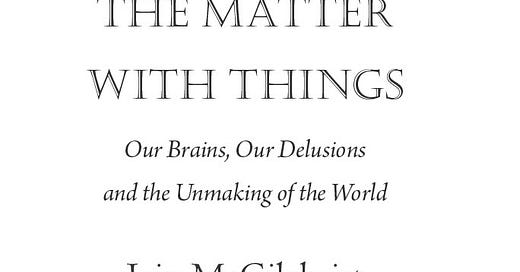



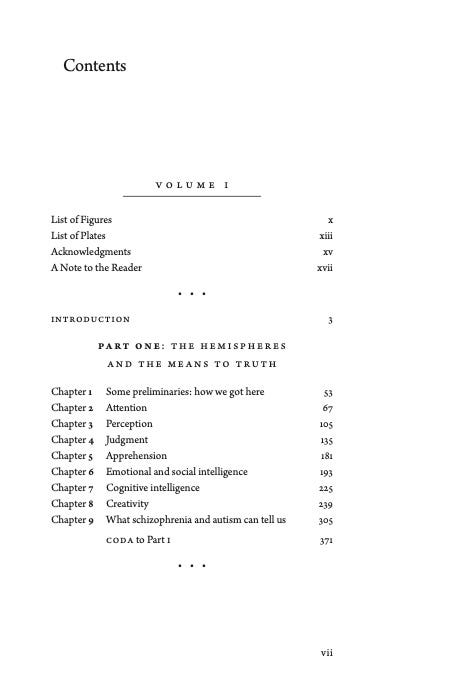
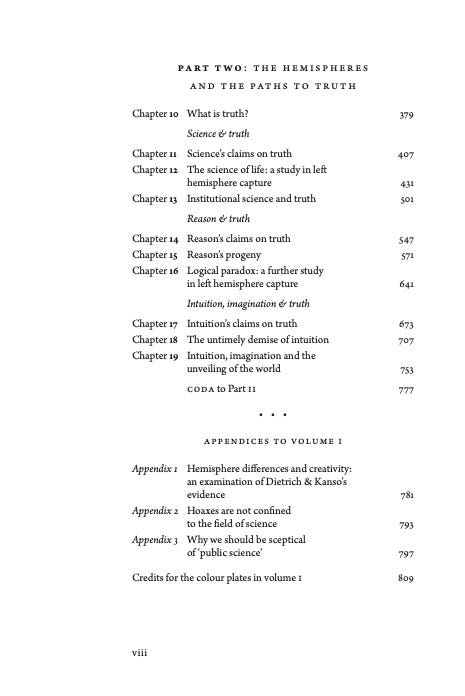
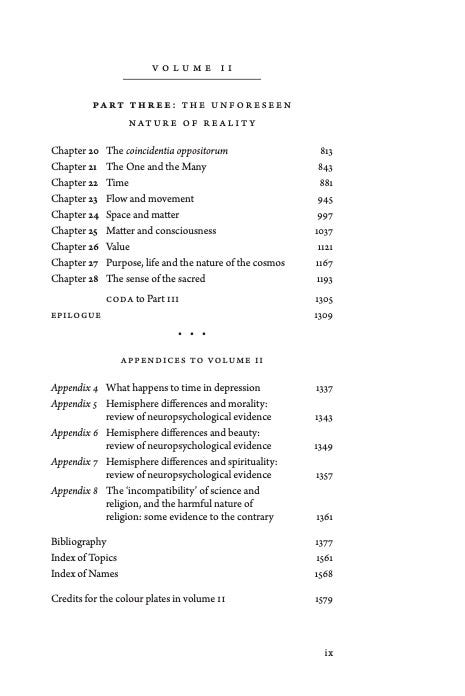
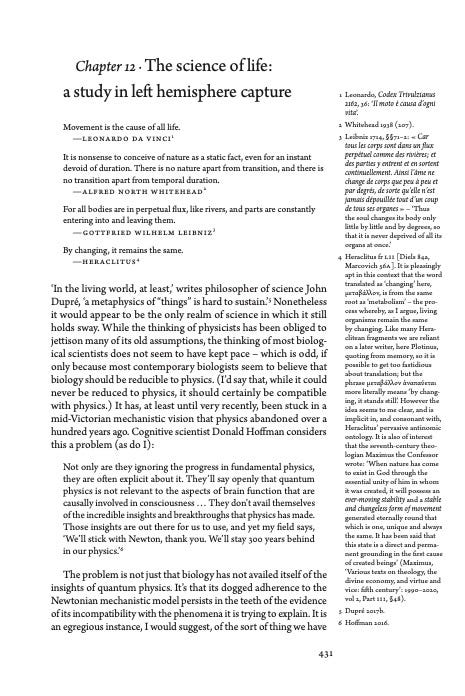
“Organisms are said to perceive or know things because they do: they are said to respond appropriately to changing circumstances, because that is exactly what happens.”
Such a simple, straightforward statement. And yet it turns so much of our mechanistic worldview on its head.
Thank you for this beautifully articulated reminder that life is not a collection of static things, but a flow of dynamic processes.
In reading this, I felt not just intellectually stirred, but reoriented. The very language of biology, as you show, betrays the deeper truth it tries to suppress: life is movement, meaning, and purpose expressed through form. It is not mechanical parts ticking in sequence.
Your framing of this as “left hemisphere capture” rings true across so many disciplines. While it may be easier to conceptualize a particle, it exists naturally as a wave function until the act of observation. Biology, too, seems trapped in a similar state — frozen into models that are limited by the understanding of our externalized symbols of information.
I’m grateful for your effort to reopen the field of vision. To bring wonder, context, and philosophical integrity back into our understanding of life. This chapter is a gift, and one I’ll return to again.
I’m almost through both volumes. This is a remarkable work and in my opinion is one of the most important, and indeed interesting, treaties on the human condition published in the modern era.